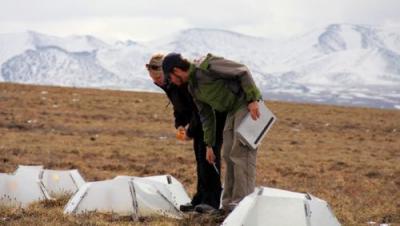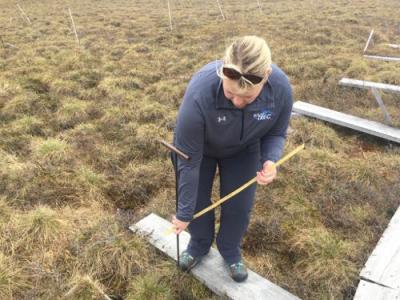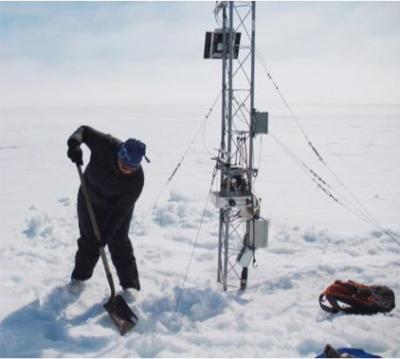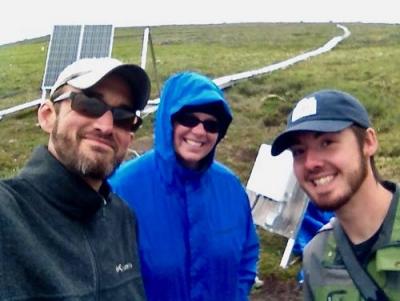The PolarTREC Experience
PolarTREC, funded by ARCUS (Arctic Research Consortium of the United States) and the NSF (National Science Foundation), endeavors to connect educators and researchers in real field work experiences. Educators then take that experience back to their learners and community and share their experience in the form of lessons, lectures, and enhanced experiences in the classroom. As a 6th grade science teacher, my PolarTREC experience as given me the inspiration and confidence to teach about Arctic science to my students, community, and legislators.
Summary Of The Science

Phenology and vegetation change in the warming arctic. That's a mouthful. Believe me, it took me a week to be able to just articulate the title of my expedition! It has taken months for me to feel somewhat confidant in the breakdown of the important work that Dr. Steve Oberbauer and his research team from Florida International University do each season. The FIU research team are members of the AON-ITEX project (Arctic Observation Network-International Tundra Experiment). This is a voluntary collaboration of various researchers who study and collect a wide variety of data of both biotic and abiotic factors in the tundra ecosystem. Dr. Oberbauer and Dr. May have been focused on remote sensing. Their project bridges the gap of the feet on the ground research teams that are measuring and collecting data on a small scale (think grids with 10cm squares and measuring blades of grass with a ruler) and the satellites in space with their large scale measurements (usually a 1km square). The MISP (Mobile Instrumented Sensor Platform) is that bridge. This remote sensing platform carry and run the same battery of sensors that can be found on the satellites a few meters off the ground along a 50 by 2 meter transect. Effectively, the data that they collect are providing that critical connection between what the people on the ground are observing and what the satellites are observing. This is a long term project that tracks how the phenological changes plants go through (the timing of events like greening up, flowering, and seeding out) are affecting by a changing arctic climate.
Bringing The Science Back To My Classroom

I plan on running a common narrative thread throughout my entire 6th grade curriculum. I know that humans learn best when there is a story to which they can attach new learning and ideas. By recalling the story, they can recall the information. The challenge will be bringing Arctic experiences, complete with pictures, artifacts, and occasional Polar Connect events, to weave a fabric of science that encompasses topics like cells and their functions, cycles of matter and energy, factors that affect populations, and health of ecosystems. I plan on utilizing our small school garden plot to create phenology plots complete with OTCs (open top chambers) that we used in the field. Through this garden plot, I hope to allow my students at least one experience to just wonder, and I hope I have grown enough professionally to let go of the control and be OK with not knowing how this will turn out in advance. Other ideas of short term lessons are (but not limited to):
- Using arctic animals and plants to teach cells to systems (basic cell theory)
- Exploring how photosynthesis and pant health (NDVI) is affected by warming chambers
- Using maps to calculate the number of animals that could be supported in a specific area
- Using historical data from the FIU remote sensing project to find a simple pattern and draw inferences
- Northern lights phenomena to teach about magnetism.
Be sure to keep checking my profile as I upload these lessons as I develop them through the next school year.
Further Education and Outreach Opportunities

In addition to my plans for my students, I plan on sharing this experience with all the students in our district with Polar Assemblies. I am working on presentations for elementary and secondary aged students. I will also present to OSTA (Oklahoma Science Teacher Association) and submit abstracts to other professional development opportunities. As far as community outreach, I have already been featured in two local newspapers after my return. I plan on contacting the reporters who covered my story before the expedition once school starts to see the impact this program has on a classroom. I will be speaking to two teacher preparatory programs at my Alama Mater, Southwestern Oklahoma State University and the University of Central Oklahoma. I will also present at the local library that hosted my Polar Connect event.
Continued Outreach

I am inspired to continue the outreach to my legislators. In both our House and Senate committees, I will ask to share about my experience to specific committees and individuals. To our Education committees I’ll focus on the importance of funding experiential professional development for educators. Do not waste money on bringing in programs and consultants. Instead, send us out into the world to bring it back to our students. I cannot prepare the next generation of scientists without knowing exactly what a scientist does. The same goes for math teachers, history teachers, English teachers, etc. To the Environmental committees I plan on focusing on the work that is happening in the Arctic, the evidence I saw with my own eyes, and the impact we have on the Arctic. I want to show them they should care about what happens in the Arctic, because it directly impacts us in Oklahoma.
*This program is supported by the National Science Foundation under award 1345146. Any opinions, findings, and conclusions or recommendations expressed by this program are those of the PIs and coordinating team, and do not necessarily reflect the views of the National Science Foundation.
| Attachment | Size |
|---|---|
| Download Report (747 KB)746.58 KB | 746.58 KB |
This program is supported by the National Science Foundation. Any opinions, findings, and conclusions or recommendations expressed by this program are those of the PIs and coordinating team, and do not necessarily reflect the views of the National Science Foundation.
